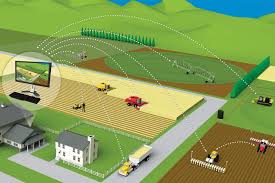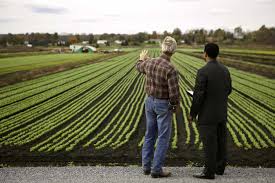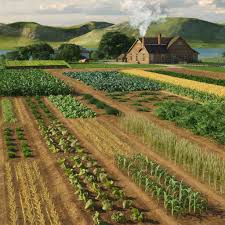Farm planning is a process that involves the allocation of scarce resources of the farm in such a way or forms that resource use and income efficiency is achieved. It is also regarded as the decision-making process of deciding in the present time for the future of the rational use or combination of inputs or resources to achieve maximum output.
This process involves making choices or choosing from the available scarce resources. It is also concerned with the various adjustments the farmer makes among the existing enterprises that will give maximum output.
Farm planning is aimed at profit and income maximization that will be sustained over a long period of time, maximization of net income through efficient use of resource planning, and most importantly, an increase in the standard of living of the farmer.
Read Also: How to use Super Gro for crop farming
Importance of Farm Planning

Farm planning is an important component of farm management as it enables the farmer to achieve the farming objectives in relation to the farm and family in a more organized way.
i. It ensures a careful examination of the existing resources and efficient allocation of resources.
ii. With farm planning, the farmer is able to take decisions with respect to the enterprise and/or enterprise combination to go into and be maintained.
iii. Farm planning enables the farmer to know the best combination of inputs to be used with a view to achieving maximum output, i.e., input-output relationship.
iv It helps the farmer to select the best alternative among the existing scarce resources.
v. It assists the farmer to identify the input and credit needs of the farm.
vi. Future costs and returns can be determined using farm planning.
Read Also: How to use Super Gro for crop farming
Steps Involved In Farm Planning

1. Preparing the General Farm Layout: The general farm layout, including the number and shape of fields, topography, soil type, farm structures, and irrigation systems, can be indicated in the farm map.
2. Recording the History of the Farm: It is essential to obtain data or information regarding resources used and their efficiency. The crop rotation system adopted previously should be known. On the basis of this information, planning with respect to crops to be grown, crop rotations to be followed, credit requirements, and sources will be possible.
3. Planning Bullock and Human Labour Requirements: A calendar of farm operations should be prepared, and bullock and human labour requirements should be determined for different months. A labour requirement plan should be developed to guide the farmer in analyzing labour requirements with respect to their availability.
4. Planning Land Use and Soil Conservation Practices: Having obtained full information on resources and their analysis, it is important to adopt practices that will ensure efficient use of land. While planning the cropping programme, attention should be given to cropping and crop management plans that will enhance soil conservation.
5. Planning the Livestock Programme: Livestock and crop production are supplementary enterprises. The farming system should be planned to encourage the production of forages and fodder crops throughout the year to maintain the animals.
6. Planning the Marketing of Produce: The study of market forces and conditions is an essential component of farm planning. Proper planning ensures that the farmer can market produce effectively and maximize returns.
Do you have any questions, suggestions, or contributions? If so, please feel free to use the comment box below to share your thoughts. We also encourage you to kindly share this information with others who might benefit from it. Since we can’t reach everyone at once, we truly appreciate your help in spreading the word. Thank you so much for your support and for sharing!
Read Also: The Different Types of Fertilizers and How they Work

